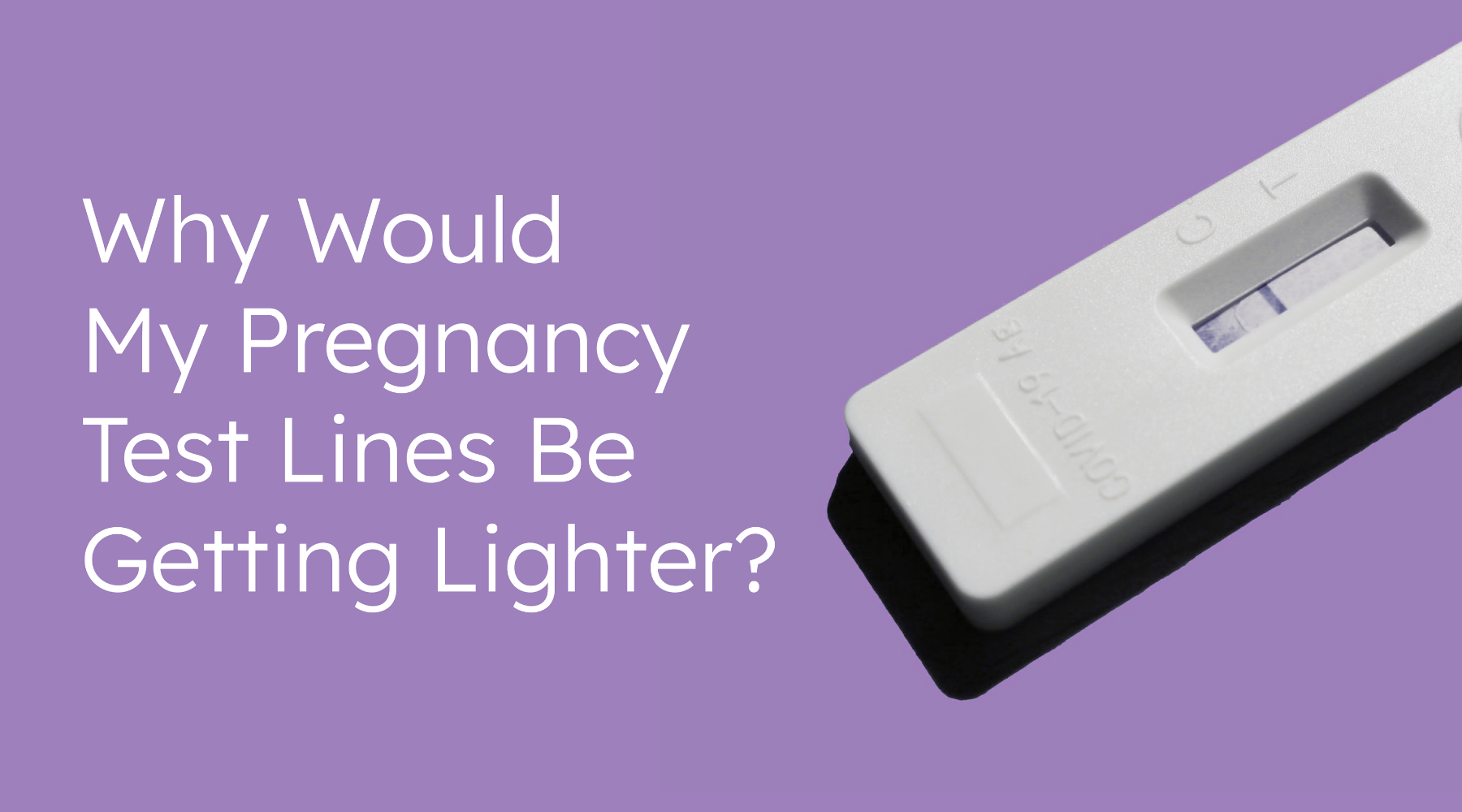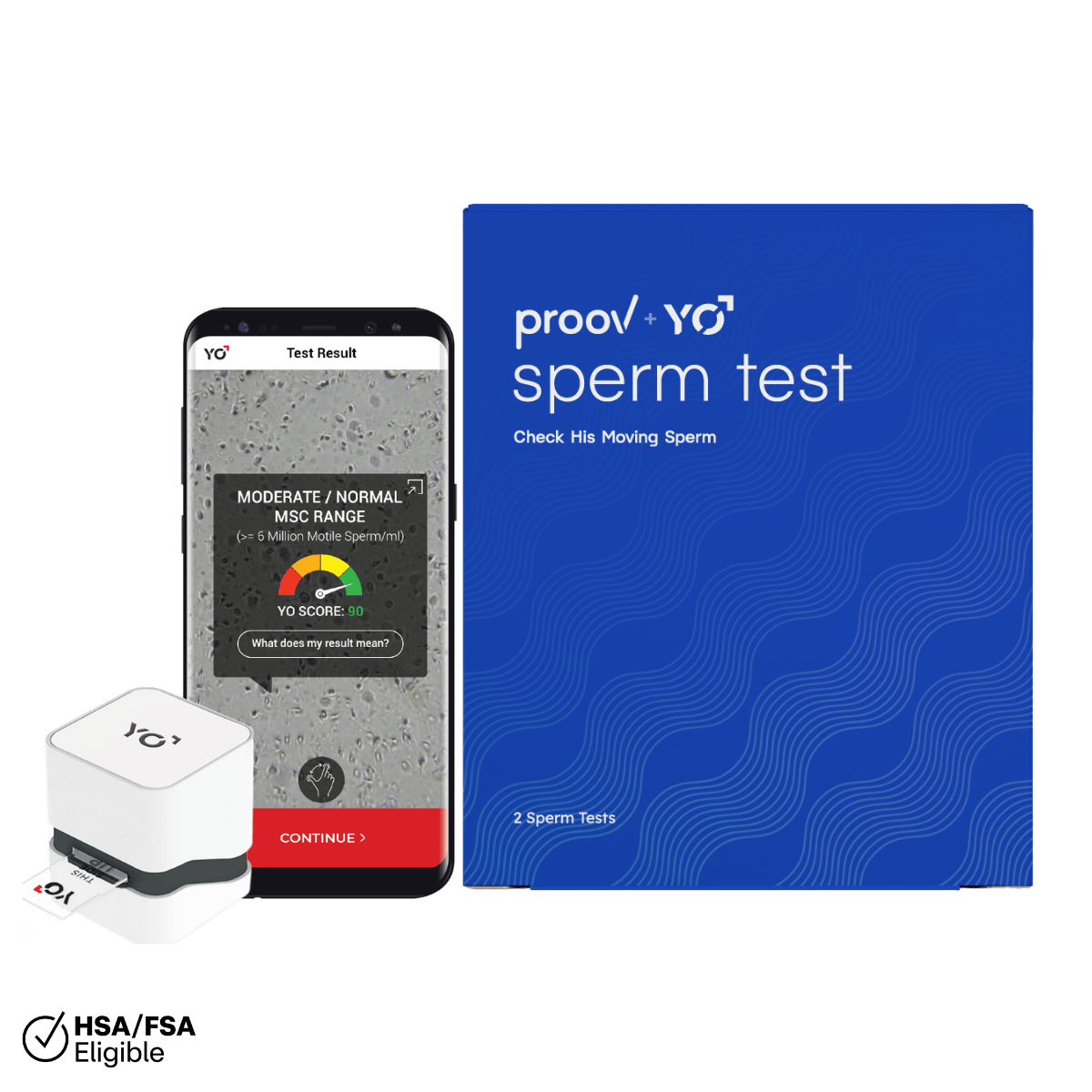If you’re taking multiple pregnancy tests, you may notice a variation in the color between test lines. It’s natural to be uncertain about what this could mean.
We’re here to explain how pregnancy tests work, what information they can give you, how to know if you’re using them correctly, and what to do if you believe the lines are getting lighter.
How Pregnancy Tests Work
Let’s start by understanding how pregnancy tests work. When a sperm meets an egg in the female reproductive system, it begins growing and traveling. All healthy pregnancies must make their way to the uterus, where the embryo can implant in the thick, nutrient rich lining.
This process is called implantation, and it’s the first signal to the rest of the body that a pregnancy has occurred. The implanted embryo begins secreting a hormone unique to pregnancy called hCG.
When you take an at-home pregnancy test, the test is measuring the concentration of hCG in the urine sample.
Reading Pregnancy Test Lines
Unless you’re using a digital pregnancy test that says “YES,” “PREGNANT,” or shows smiley faces, you’re checking to see if there are two lines. One line is a control, and the other reveals whether or not hCG is detected (this is called the test line).
When urine crosses over the lines, the control line will fill with color and the test line will only fill with color if it detects hCG. If you see two lines, then congratulations! The test has detected the pregnancy hormone!
It may not always be this simple, though. You may experience one of these common frustrations with pregnancy tests:
- Evaporation Lines: A pregnancy test result is only accurate for a specific window of time (you can find this time listed on the test instructions). After that time, the urine begins to dry and it could leave a colorless or “grayed” line where the dye did not fill. This is not a positive pregnancy test.
- Indent Lines: Each pregnancy test has indentations that leave room for the test’s dye to fill, if necessary. It is possible that as the urine sample crosses the test, a tiny amount of ink gets pulled up into the test line. You will not notice it during the time you should read the test, but it may pop up afterward when the urine has dried. This is not a positive pregnancy test.
- Testing Error: If the control line doesn’t fill with dye, the test is invalid, regardless of whether the test strip is filled. Take an additional pregnancy test.
Interpreting Faint Lines on a Pregnancy Test
What if you take a pregnancy test, read the results during the recommended window, and the test line is very, very faint? Does that count as a positive pregnancy test? YES!
The test line does not need to be darker than the control line. In fact, this can be common when testing for pregnancy levels before a missed period.
The first day you see a very faint line, it may feel difficult to feel confident about a positive test result. But you may see a pregnancy test result line get darker and darker on subsequent days.
Reasons Why Pregnancy Test Lines Could be Getting Lighter
If you notice your pregnancy test lines are not getting darker, there could be several reasons:
- You could be testing with multiple brands of pregnancy tests. Each brand and style of pregnancy test is unique, and some lines will be darker than others based on the variation in minimal concentration testing, test line dye, and manufacturing. It’s not advised to compare these tests.
- You could be testing at different times of the day. The ideal time to take a pregnancy test is first thing in the morning, when you’ve had an entire night without urinating. This gives you the most concentrated urine sample and the best chance of spotting an early pregnancy with a pregnancy test. If you take a test with your first morning urine and another 2 hours later, it’s likely that the strength of the test line will vary due to the varying concentration of the sample.
- You could be testing at different levels of hydration. Just like an overnight sample is ideal since it’s more concentrated, a pregnancy test line will be darker when the body has not recently had high water intake. If you took a test using a concentrated sample, and another after a lot of water intake, the line could be lighter.
- You could be testing decreasing amounts of hCG. If you are using the same brand of test at the same time of day with the same levels of hydration, it’s possible that the tests are showing a decreasing amount of hCG hormone. There are many reasons for this and, while one is miscarriage, there are other possibilities, as well.

What to Know about User Error
Each pregnancy test brand includes an instruction manual about best practices for an accurate result. It’s critical that you familiarize yourself with that specific brand’s instructions so that you can get the most accurate results.
There is a lot of variety in types of pregnancy tests. They may use droppers, dip tests, or mid-stream tests. They may want a sample that stays in contact with urine from 5-15 seconds. Each brand also has a different amount of time in which to look for an accurate results. In order to get the best results, follow the instructions on your particular pregnancy test.
What if I get my period after a positive pregnancy test?
If you begin bleeding after a positive pregnancy test, it could be that the result was a false positive, or that you experienced a chemical pregnancy, which is an early miscarriage that happens before 5 weeks and before most women know they’re pregnant.
It’s also possible that the bleeding is not actually a period. Other causes of bleeding in early pregnancy are implantation bleeding, an hormonal reaction to the pregnancy within the cervix, or a subchorionic hemorrhage around the developing placenta.
When to See a Doctor
If you get a positive pregnancy result, it’s best to notify your doctor. They can confirm the pregnancy, and treat any concerns like bleeding or possible decrease in hCG hormone.
Main Takeaways
- Analog pregnancy tests rely on reading the level of hCG pregnancy hormone in a urine sample in order to produce a colored test line.
- Although there can be frustrations with pregnancy testing, if you have a colored test line within the result window, it signifies pregnancy — even if it is lighter than the control line!
- If you experience lightening test lines or bleeding after a positive test, contact your doctor for support and education.













